Sistrum: A Magical, Sacred Ancient Egyptian Musical Object
A. Sutherland - AncientPages.com - The ancient Egyptian object known as the sistrum is often associated with Hathor, a goddess who personified the principles of joy, feminine love, and motherhood.
She was known as "the Great One of Many Names," and her titles and attributes are so numerous that she was important in every area of the life and death of the ancient Egyptians.
Left: Head of Goddess Hathor, who is associated with the sistrum. Credit: Metropolitan Museum of Art - Public Domain- Right: Nefertari, wife of Ramesses II, holding a sistrum. Credit: Laban66 - Public Domain
She was a sky goddess, known as "Lady of Stars" and "Sovereign of Stars" and linked to Sirius (and so the goddesses Sopdet and Isis). Her birthday was celebrated on the day that Sirius first rose in the sky. During the Ptolemaic period, she was known to the Greeks as the goddess of Hethara, the third month of the Egyptian calendar.
The sistrum (rattle) used by Hathor and ancient Egyptians was a musical percussion instrument. It was also used in ancient Greek musical practices and often depicted in visual arts such as sculpture and pottery.
The object was made from clay, wood, or metal. The instrument provided rhythmical accompaniment to other instruments, particularly in religious rites and festivals.
Its name is derived from the Greek, 'seiein', meaning "to shake."
The sound of the sistrum is metallic, produced by many metal disks or squares, strung onto a set of transverse bars, set horizontally into a frame of varying design. Its sound was thought to echo that of a stem of papyrus being shaken. However, the acoustic effects were frequently extremely limited. Nevertheless, the sistrum was suitable for beating a rhythmical accompaniment in open-air processions.
Apuleius, the Roman philosopher, described a procession in honor of Isis in The Golden Ass, where the rhythmic pattern was three beats followed by a pause on the fourth.
The instrument's sound seems to have been regarded as protective and symbolic of divine blessing and the concept of rebirth. In addition to the symbolic significance of its sound, the shape and decoration of the sistrum relate it to the divine.
Left: Collection of sistrums at the Louvre. Credit: Rama - CC BY-SA 2.0 fr - Right: Romanized Isis holding a sistrum, also from the time of Hadrian. Credit: Marie-Lan Nguyen - Public Domain
Two forms of this ceremonial instrument may be distinguished, the oldest of which is probably the naos sistrum (ancient Egyptian).
While Hathor's head was often depicted on the handles of sistrum, an early travertine sistrum inscribed with the name of the 6th Dynasty ruler, Teti, takes the form of a papyrus topped by a naos, which is itself surmounted by a falcon and cobra, thus forming a rebus of the name Hathor (i.e., hwt Hor).
Thus, the sistrum known as the naos sistrum dates back to at least the Old Kingdom. It was usually surmounted by twin heads of Hathor upon which a small shrine or naos-shaped box was set. A vulture may crown the naos, and the handle may be covered with the incised plumage of the bird. Rods were passed through the sides of this naos to form the rattle.
Carved or affixed spirals framing the sides of the naos represented the horns of the cow-eared goddess. Note that this earliest form of sistrum was often made of faience.
Most surviving sistrum instruments usually date to the Greco-Roman Period, when the second type of sistrum was common. It is referred to as a hooped (or arched) sistrum, known in ancient Egypt as shm or ib. It is known from the 18th Dynasty onward, though it seems to be based on earlier prototypes for which we have the hieroglyphic designation but no depictions.
There are surviving examples of sistrums in bronze, mostly found in a burial context. An interesting example dates from the second half of the 2nd century BCE, found in Attica. This sistrum has four bronze horizontal bars of decreasing length, which slide in and out of the hoop. On the top of the hoop is a modeled dog, there is a modeled bull's head at the base of the handle. The handle itself is carved to represent a cluster of six auloi in order to resemble a column that is topped by a carved capital, joining the handle to the hoop.
In Greek art, dancers in processions are occasionally depicted holding a sistrum. A celebrated example is the Harvester Vase from Hagia Triada on Minoan Crete (1500-1450 BCE) which depicts a sistrum player in a harvest festival procession.
It is believed that this sacred ancient Egyptian instrument originated in the worship of Bastet. It was used in dances and religious ceremonies, particularly in the worship of the goddess Hathor, with the U-shape of the sistrum's handle and frame seen as resembling the face and horns of the cow goddess.
It was also shaken to avert the flooding of the Nile and to frighten away Set. In her role as mother and creator, Isis was depicted holding a pail symbolizing the flooding of the Nile in one hand and a sistrum in the other. Likewise, the goddess Bast is often depicted holding a sistrum, symbolizing her role as a goddess of dance, joy, and festivity.
Written by – A. Sutherland AncientPages.com Staff Writer
Updated on June 27, 2021
Copyright © AncientPages.com All rights reserved. This material may not be published, broadcast, rewritten or redistributed in whole or part without the express written permission of AncientPages.com
More From Ancient Pages
-
 3,000-Year-Old Graves With Some Oldest Burial Sites Discovered in Central Norway
Archaeology | Dec 8, 2017
3,000-Year-Old Graves With Some Oldest Burial Sites Discovered in Central Norway
Archaeology | Dec 8, 2017 -
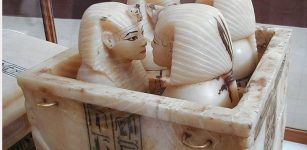 Canopic Jars: Funerary Tradition Of Ancient Egyptians And Their Beliefs In Afterlife
Ancient Traditions And Customs | Jun 23, 2017
Canopic Jars: Funerary Tradition Of Ancient Egyptians And Their Beliefs In Afterlife
Ancient Traditions And Customs | Jun 23, 2017 -
 Mysterious 70-Million-Year-Old Underground Village And Magnificent Tower Of Eben-Ezer In Belgium
Featured Stories | Mar 20, 2017
Mysterious 70-Million-Year-Old Underground Village And Magnificent Tower Of Eben-Ezer In Belgium
Featured Stories | Mar 20, 2017 -
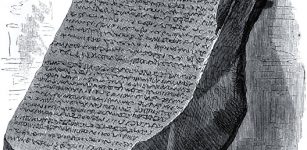 Rosetta Stone – Artifact That Solves The Riddle Of Egyptian Hieroglyphics
Artifacts | Sep 28, 2015
Rosetta Stone – Artifact That Solves The Riddle Of Egyptian Hieroglyphics
Artifacts | Sep 28, 2015 -
 Brochs: Ingeniously Engineered Windowless Iron Age Structures Of Atlantic Scotland
Featured Stories | Sep 20, 2023
Brochs: Ingeniously Engineered Windowless Iron Age Structures Of Atlantic Scotland
Featured Stories | Sep 20, 2023 -
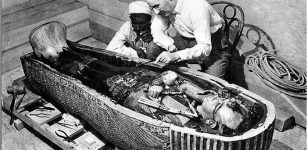 On This Day In History: King Tut’s Tomb Is Unsealed And Opened – On Feb 16, 1923
News | Feb 16, 2017
On This Day In History: King Tut’s Tomb Is Unsealed And Opened – On Feb 16, 1923
News | Feb 16, 2017 -
 Danish Royal Sunken Ship Sheds Light On Psychological Warfare In The Middle Ages
Archaeology | Apr 3, 2017
Danish Royal Sunken Ship Sheds Light On Psychological Warfare In The Middle Ages
Archaeology | Apr 3, 2017 -
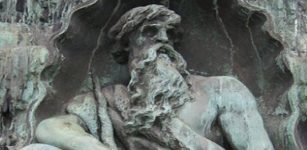 Aegir – Jotun Lord Of The Stormy Seas Revered And Feared By Norsemen
Featured Stories | Sep 6, 2019
Aegir – Jotun Lord Of The Stormy Seas Revered And Feared By Norsemen
Featured Stories | Sep 6, 2019 -
 Unexplained Historical Mass Disappearances – Lost Without Trace – Part 1
Featured Stories | May 31, 2019
Unexplained Historical Mass Disappearances – Lost Without Trace – Part 1
Featured Stories | May 31, 2019 -
 Clues What Tiggered Climate Change 8,000 Years Ago Found In Scotland
News | Sep 15, 2023
Clues What Tiggered Climate Change 8,000 Years Ago Found In Scotland
News | Sep 15, 2023 -
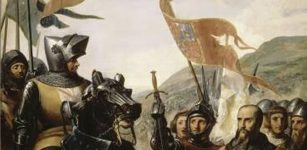 Bertrand du Guesclin: ‘Eagle Of Brittany’ Brave, French Commander And His Clash With Sir Thomas Of Canterbury
Featured Stories | May 1, 2023
Bertrand du Guesclin: ‘Eagle Of Brittany’ Brave, French Commander And His Clash With Sir Thomas Of Canterbury
Featured Stories | May 1, 2023 -
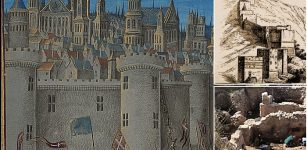 Late Roman-Era Rooms, Offering Vessels Unearthed At Ancient City Of Antiocheia, Southern Türkiye
Archaeology | Oct 31, 2022
Late Roman-Era Rooms, Offering Vessels Unearthed At Ancient City Of Antiocheia, Southern Türkiye
Archaeology | Oct 31, 2022 -
 Was Megalithic Stone Circle Of Mzoura The Tomb Of Giant Antaeus?
Civilizations | Sep 5, 2015
Was Megalithic Stone Circle Of Mzoura The Tomb Of Giant Antaeus?
Civilizations | Sep 5, 2015 -
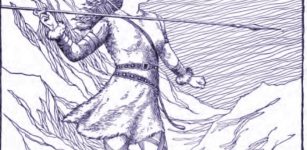 Skadi: Goddess Of Destruction, Giantess And Patron Of Winter Hunters And Skiers In Norse Mythology
Featured Stories | Dec 14, 2017
Skadi: Goddess Of Destruction, Giantess And Patron Of Winter Hunters And Skiers In Norse Mythology
Featured Stories | Dec 14, 2017 -
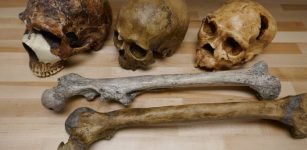 Ancient Fossils Reveal Climate Altered Humans’ Body And Brain Size
Archaeology | Jul 8, 2021
Ancient Fossils Reveal Climate Altered Humans’ Body And Brain Size
Archaeology | Jul 8, 2021 -
 Investigation Of A 2.9-Million-Year-Old Site Reopens Case Of Who Made First Stone Tools
Archaeology | Feb 9, 2023
Investigation Of A 2.9-Million-Year-Old Site Reopens Case Of Who Made First Stone Tools
Archaeology | Feb 9, 2023 -
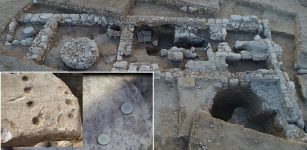 1,200-Year-Old Soap ‘Factory’ Unearthed In Beduin City Of Rahat In Israel
Archaeology | Aug 18, 2020
1,200-Year-Old Soap ‘Factory’ Unearthed In Beduin City Of Rahat In Israel
Archaeology | Aug 18, 2020 -
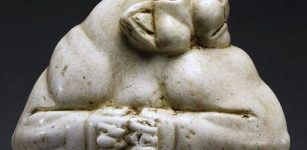 Amazing ‘Guennol Lioness’ – One Of The Greatest Ancient Works Of Art Of All Time
Artifacts | Sep 6, 2018
Amazing ‘Guennol Lioness’ – One Of The Greatest Ancient Works Of Art Of All Time
Artifacts | Sep 6, 2018 -
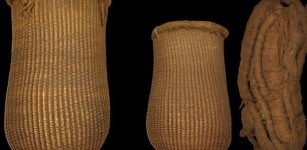 9,500-Year-Old Baskets And 6,200-Year-Old Sandals Found In Spanish Cave
Archaeology | Sep 28, 2023
9,500-Year-Old Baskets And 6,200-Year-Old Sandals Found In Spanish Cave
Archaeology | Sep 28, 2023 -
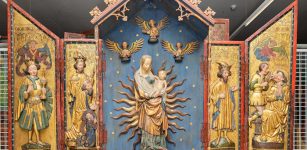 Secrets Of Nanomaterial From The Middle Ages Examined By Scientists
Archaeology | Oct 11, 2022
Secrets Of Nanomaterial From The Middle Ages Examined By Scientists
Archaeology | Oct 11, 2022


